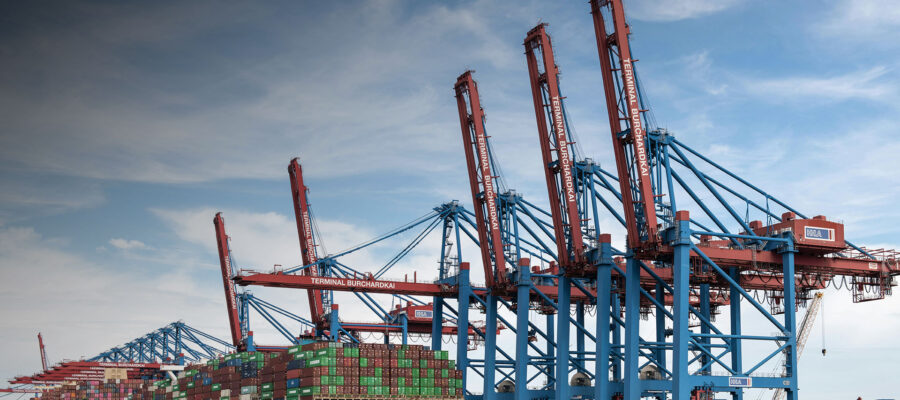This post has already been read 46432 times!
How a network changes the supply chain game
Given the ongoing uncertainty and rapid change in markets, technology, transportation, and shipping routes, supply chains need to be more agile and resilient than ever. Frankly, doing “business as usual,” is not an option for most companies. Creating strategies, business continuity plans from history and trying to solve the problem with visibility, is doing just more of the same that we’ve always been doing, while hoping for a better result.
In fact, reactive efforts like this not only don’t work, they do more damage by inhibiting progress and keeping value chains operating as independent companies instead of working together to create value for the whole network.
Rethinking Supply Chain Management: How to reimagine supply chains for improved agility, effectiveness, and resilience… Share on XReimagining Supply Chains
We need to rethink our approach thus far, and reimagine supply chains from top to bottom.
As an example, let’s look at how One Network (a Blue Yonder company) approached it. I think you’ll see how it is truly different to other approaches, and how this network approach brings value to every party in a value chain. This is only possible because the Digital Supply Chain Network™ and the NEO Platform that powers it, were designed from the ground up and outside in, as a true network, and this finally overcomes the limitations of legacy and traditional solutions.
The guiding principle was to envision the ideal supply chain by understanding and solving the constraints that have repeatedly plagued us all.
Several fundamental principles underpin this approach.
First, it was built from the outside in, considering the real-world limitations of every process, such as capacity constraints, material constraints, and demand spikes. This approach aligns with Goldratt’s “Theory of Constraints.”
In essence, Goldratt’’s theory of constraints maintains that “Every system has a limiting factor or constraint. Focusing improvement efforts to better utilize this constraint is normally the fastest and most effective way to improve profitability.” One Network models these constraints and brings them forward to show their impact on the plan in a true network consensus process, rather than blindly launching a plan and hoping for the best.
One Network’s solution starts with leading demand planning logic and processes for the enterprise but also considers the bidirectional context for every supplier, carrier, and partner in the value chain. Understanding how demand shifts affect suppliers, allows them to manage their operations better, carriers can optimize asset utilization, and partners and customers receive improved products and services.
This approach reduces demand variability. Historical demand data shows that while there are peaks and valleys, the overall demand is relatively flat. However, the variance in demand leads to overreacting and sub-optimal processes for demand planners, supply planners, and logistics operators. They often resort to safety stock, buffer inventory, and extended cycle times to protect against variability.
The real issue lies in the time delay between seeing demand changes and reacting to supply availability.
Traditional batch processing systems can take days or weeks to propagate demand changes across all internal and external parties to create a true plan. By the time the supply plan is ready, the demand has likely changed again. This cycle creates inefficiencies and disconnects in the supply chain.
For example, running an S&OP on Monday might show up to supply planners on Tuesday, where inventory is netted for buy plans. By Wednesday, suppliers receive their orders and commit by Thursday. By Friday, the supply chain is clear on what is actually capable. However, the process starts again the following Monday, creating a lag that makes it impossible to navigate effectively.
In the logistics world, this disconnect, and batch processing create chaos. The data and processes are not synchronized, leading to inefficiencies and a lack of real-time visibility. This outdated approach is akin to navigating a boat by looking at the wake behind it to determine if it’s on course, which is clearly impractical.
How Supply Chain Networks Enable Better Outcomes for All Trading Partners
This innovative approach addresses these challenges by providing a holistic, real-time view of the supply chain, enabling better decision-making and collaboration across the entire value chain. This results in a more efficient, responsive, and resilient supply chain that can adapt to the ever-changing landscape.
The Network flattens demand and supply curves by streamlining and synchronizing processes. This agility and resilience allow for rapid responses to changes, such as shifts in demand or disruptions in transportation routes. For instance, if demand changes in the morning, the system can solve it by the afternoon. If a drought affects the Panama Canal, the system can plan and execute alternative routes in advance.
This holistic approach looks beyond the functional expertise of specific supply chain systems and considers the entire workflow. For example, in the supply chain for a bag of potato chips, the process goes from a potato in a field to a bag of chips on a store shelf. This includes harvesting, manufacturing, distribution, and responding to market demand changes.
Because the system spans the entire supply chain, and all parties benefit from having better information to optimize their businesses, it delivers multi-party value. When a buyer makes a change, the supplier, carrier, and other partners are immediately informed and can respond accordingly. This reduces order cycle times and eliminates the need for buffer stock and extended lead times.
Rethinking Supply Chain Management: How to reimagine supply chains for improved agility, effectiveness, and resilience… Share on XIncremental orchestration is another key feature. The system continuously monitors and optimizes plans in real-time, addressing issues as they arise. This ensures that the supply chain remains agile and responsive to any fluctuations, whether in demand, supply, or logistics.
One Network’s platform also has adaptive AI embedded, providing dynamic prescriptions that update in real-time as conditions change. This goes beyond simple alerts and chatbots, offering actionable solutions that can be executed autonomously or coordinated across multiple parties.
In summary, this is a revolutionary approach to supply chain management, providing real-time visibility, multi-party collaboration, and adaptive AI to create a more agile, resilient, and efficient supply chain. It’s an approach that means all parties are better informed, can make better decisions, and see better outcomes. This reimagined approach enables all companies to navigate the complexities of the modern supply chain landscape effectively.
- Rethinking Supply Chain Management - November 13, 2024
- What is on the Horizon for Supply Chain Management? - April 22, 2024
- 6 Truths to Clarify and Empower Your Digital Supply Chain Strategy - May 26, 2023



